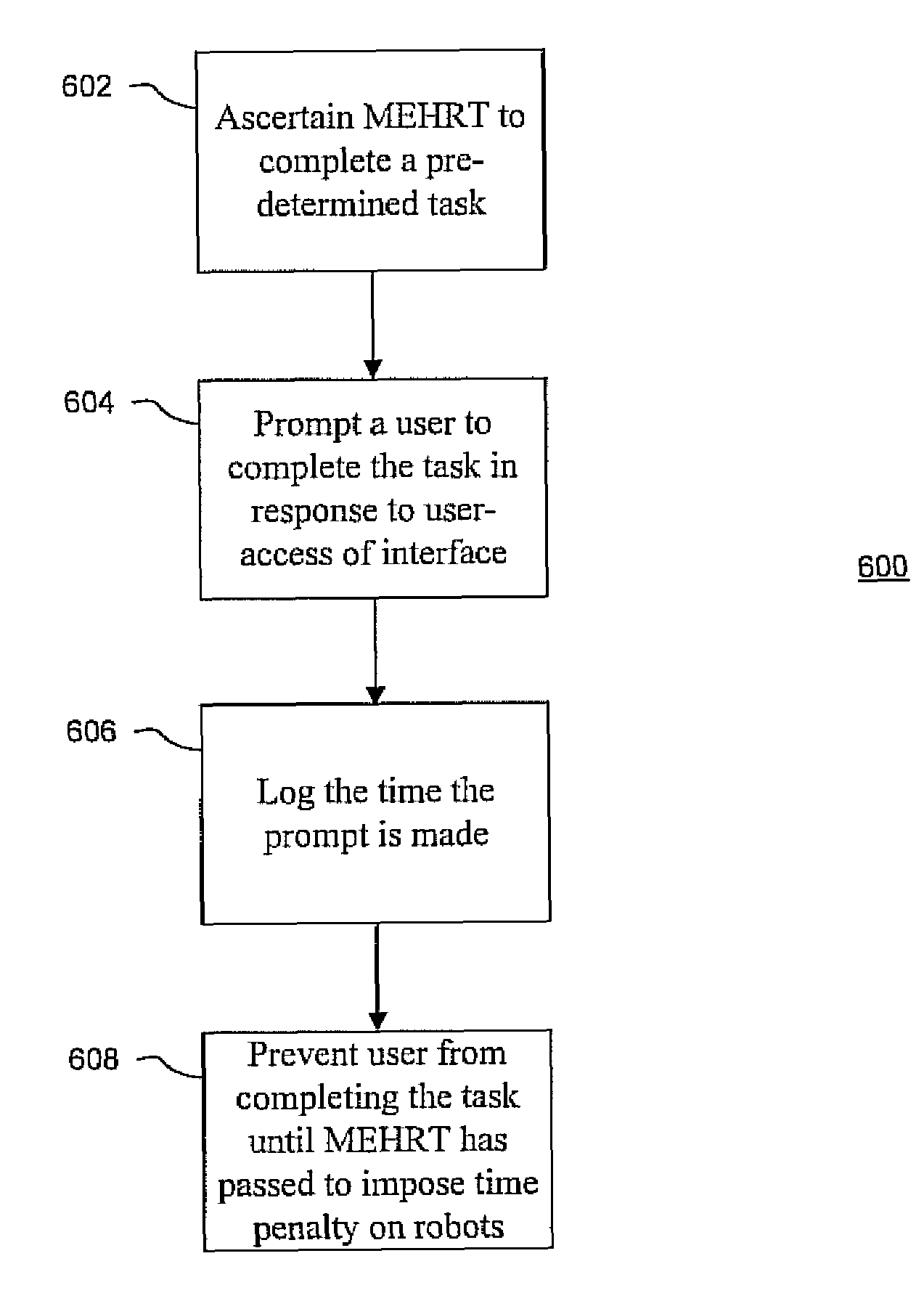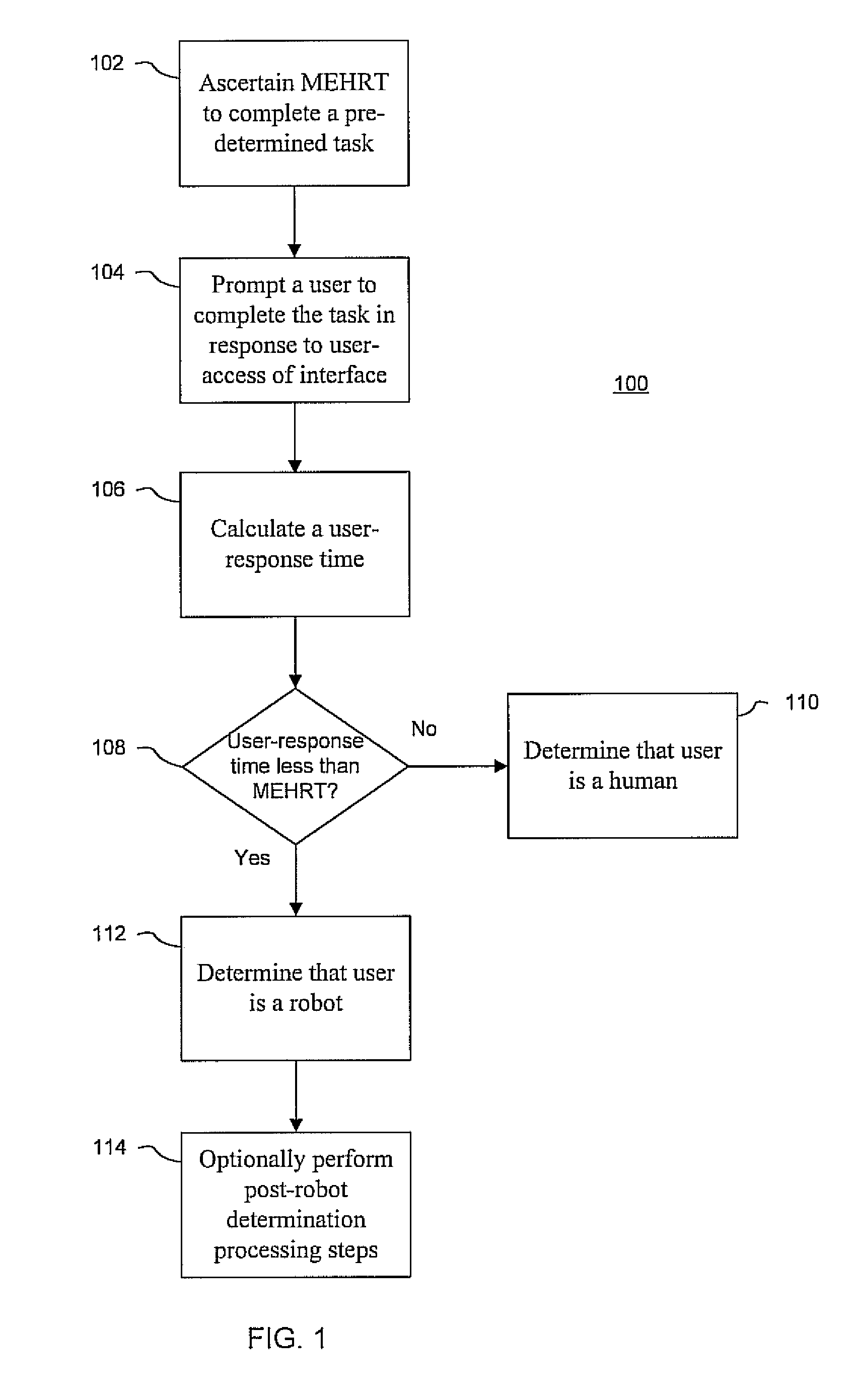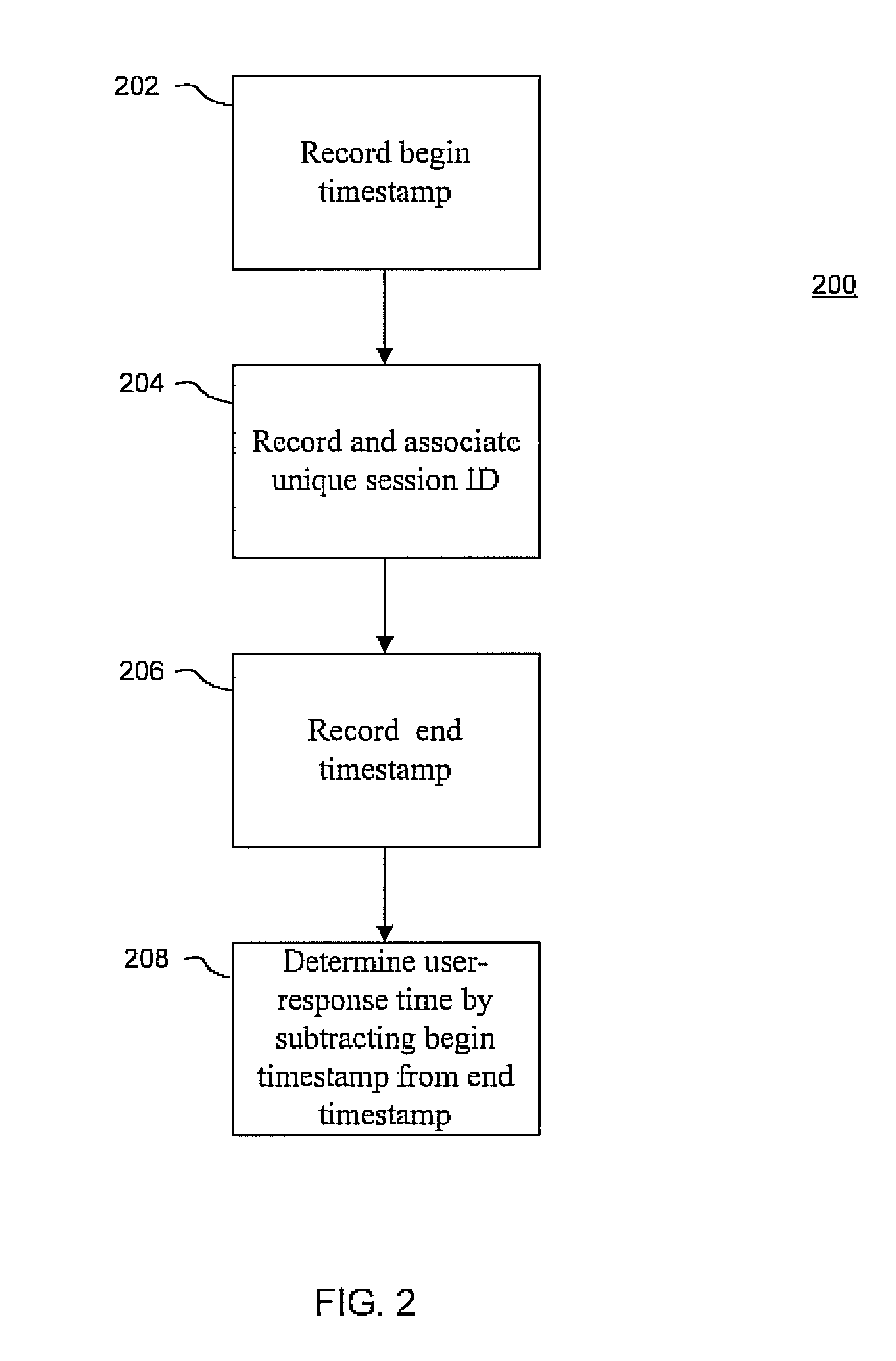Method and system for detecting and deterring robot access of web-based interfaces by using minimum expected human response time
a robot and web-based interface technology, applied in the field of systems and methods for identifying and/or deterring robot access of such resources, can solve the problems of robot access degrading server performance, content of the site unusable, automatic and abusive accessing by computer robots of web page interfaces
- Summary
- Abstract
- Description
- Claims
- Application Information
AI Technical Summary
Problems solved by technology
Method used
Image
Examples
Embodiment Construction
[0022]The present principles provide systems and methods which enable the detection of robot-access of a web-based interface. An aspect of a method in accordance with an implementation of the present principles is based on the fact that the elapsed time used by robots to access a web-based interface is substantially less than a human. Further, time thresholds for an interface, including those needing more input from a user, can be defined and used to differentiate between robot and human access. It should be understood that the term “user,” as employed herein, may apply to either a robot or a human.
[0023]Embodiments of the present invention can take the form of an entirely hardware embodiment, an entirely software embodiment or an embodiment including both hardware and software elements. In a preferred embodiment, the present invention is implemented in software, which includes but is not limited to firmware, resident software, microcode, etc.
[0024]Furthermore, the invention can tak...
PUM
 Login to View More
Login to View More Abstract
Description
Claims
Application Information
 Login to View More
Login to View More - R&D
- Intellectual Property
- Life Sciences
- Materials
- Tech Scout
- Unparalleled Data Quality
- Higher Quality Content
- 60% Fewer Hallucinations
Browse by: Latest US Patents, China's latest patents, Technical Efficacy Thesaurus, Application Domain, Technology Topic, Popular Technical Reports.
© 2025 PatSnap. All rights reserved.Legal|Privacy policy|Modern Slavery Act Transparency Statement|Sitemap|About US| Contact US: help@patsnap.com



